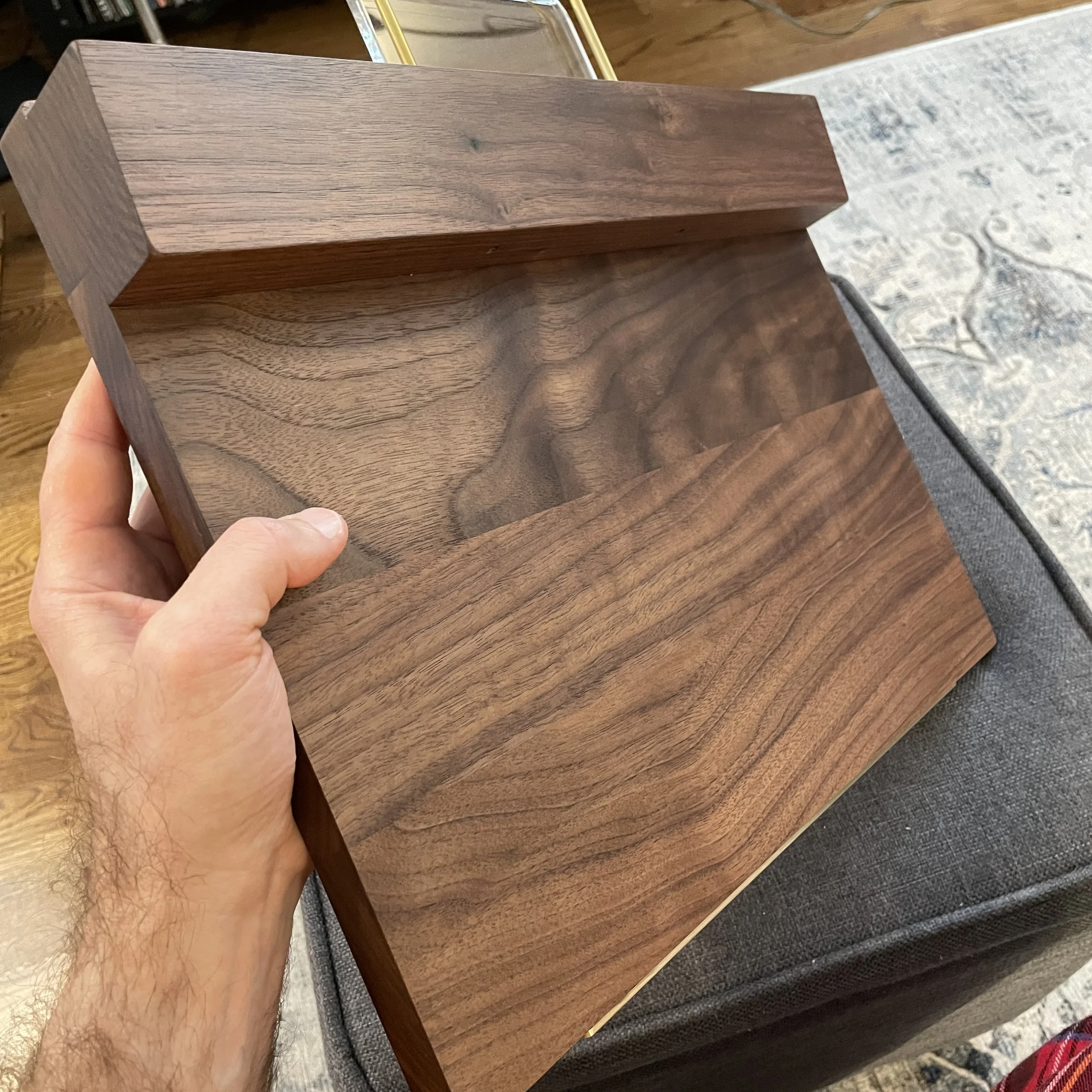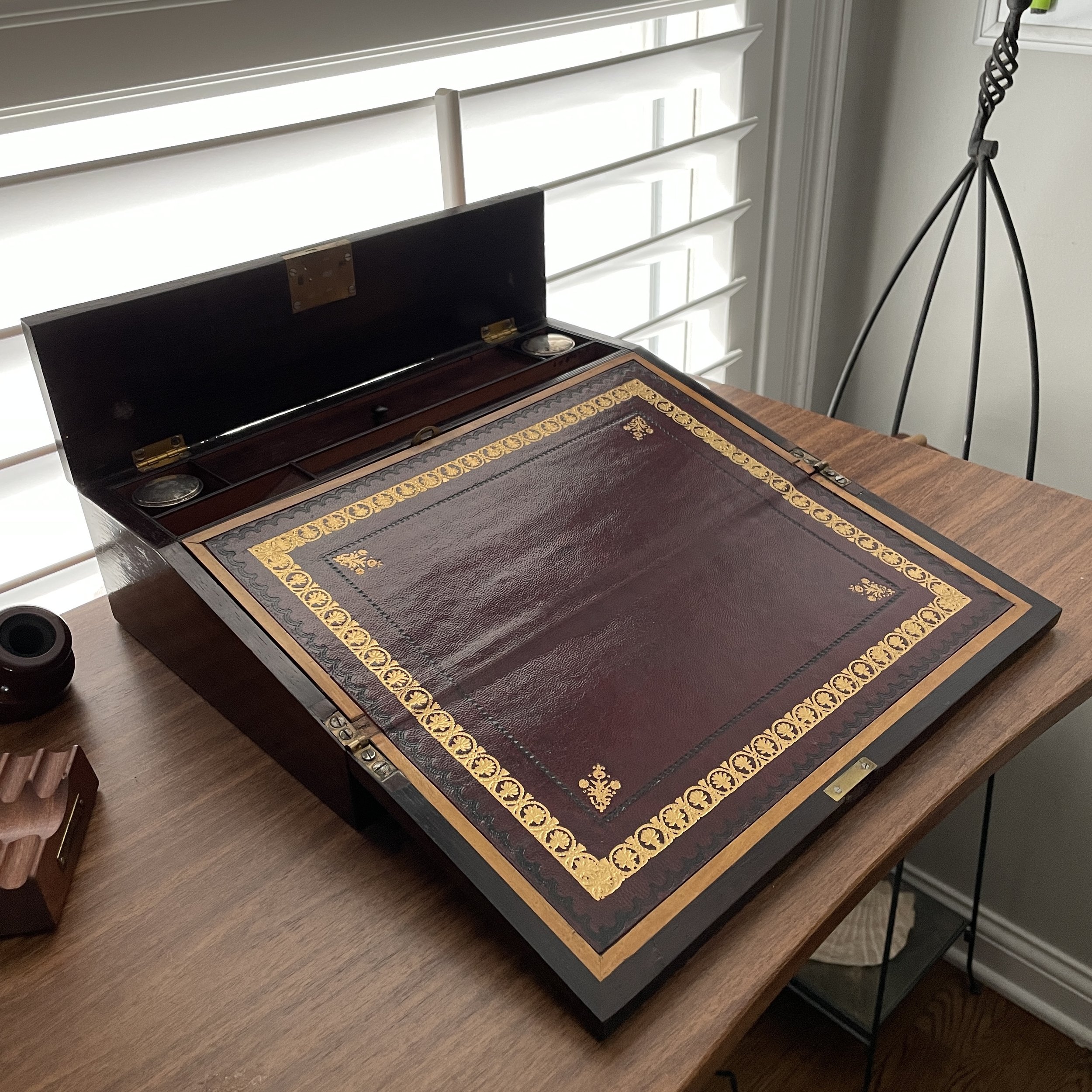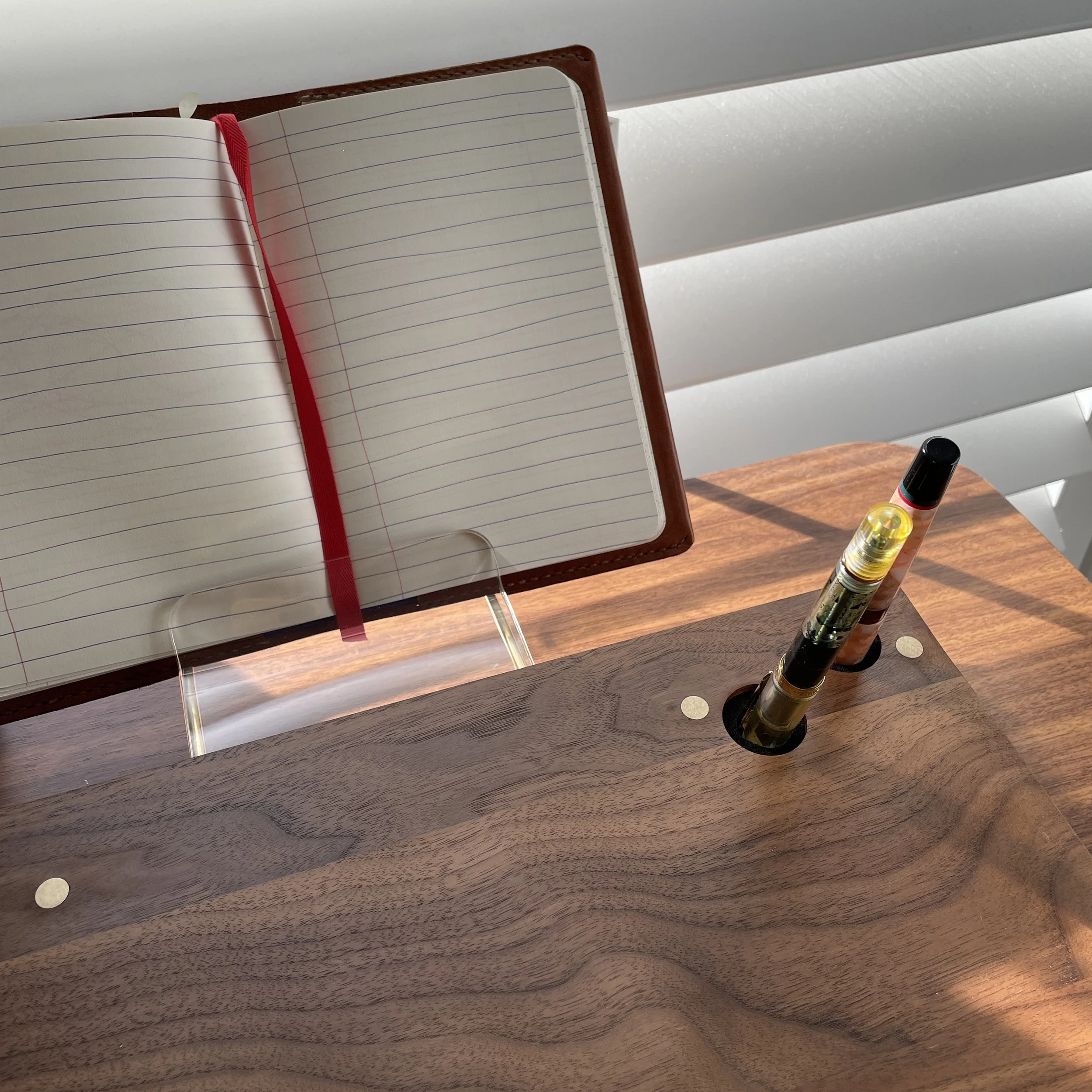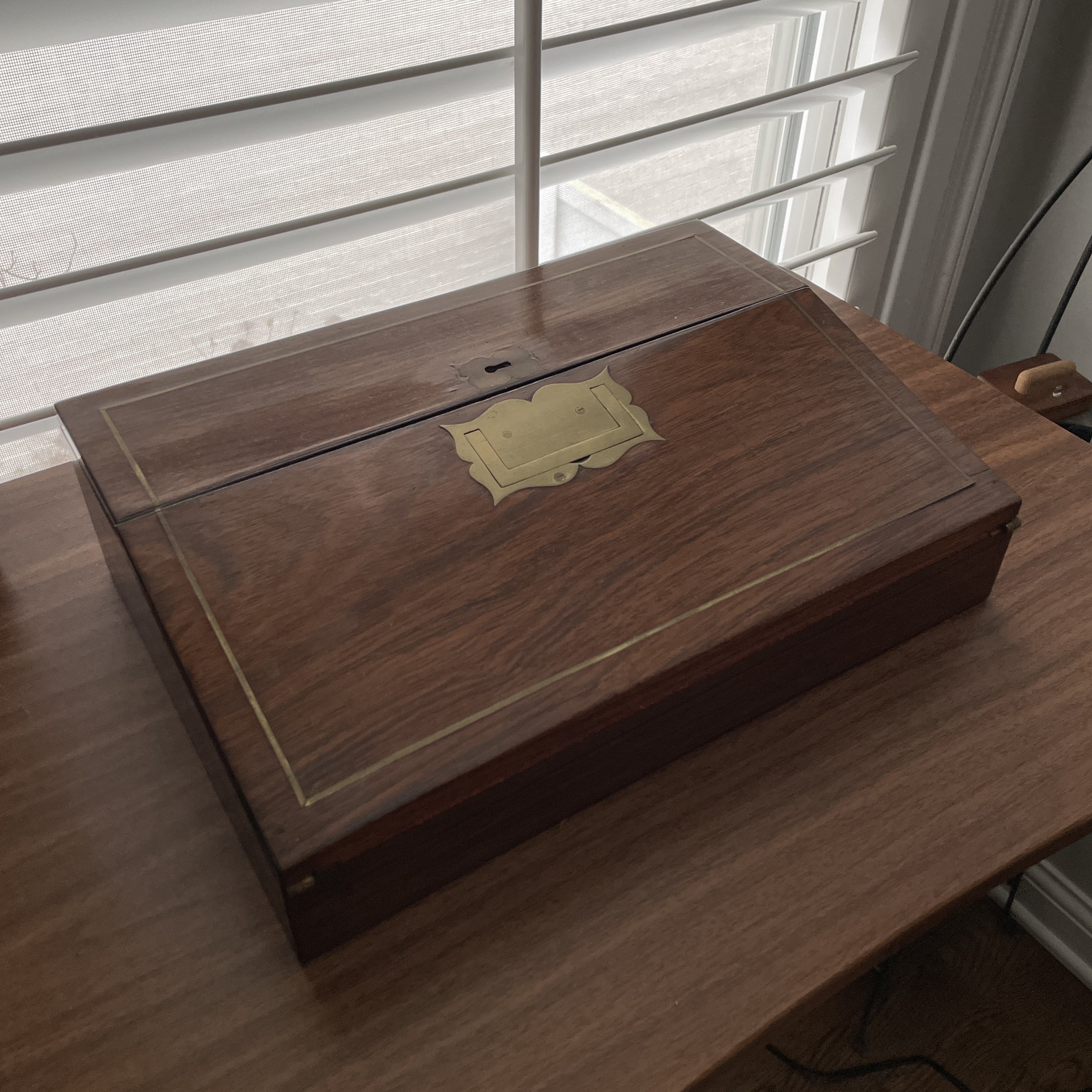We’re big fans of Good Made Better products here at T.G.S. The company’s focus on “mindful writing tools” and stated goal of cultivating an intentional space for writing dovetails nicely with our own curation philosophy, as all of the items in our own shop are chosen with a focus on good design and usability. Those familiar with Good Made Better likely know about their first product, the Penwell pen holder, and successful follow-up releases such as the Writewell Portable Desk. It was only a matter of time before they designed their own fountain pen, right?
The Good Made Better Jester (left), shown posted, and the Good Made Better Muse (right), shown uncapped.
Yesterday, Good Made Better launched their latest Kickstarter project, the “Jester” and “Muse” fountain pens. Personally, I’m thrilled that Dan Keller, the maker behind the brand, decided to use ebonite for both pens. A classic penmaking material, ebonite pens have a warm feel in the hand and a distinct vintage-inspired look that’s always appealed to me. When I first saw these pens at this year’s Chicago Pen Show, it took all of five minutes for me to buy one of the Jester pocket pens, in this mottled matte beige ebonite that also features swirls of orange, black, and even light blue, the latter of which is hard to photograph and only really shows up in certain lighting.
Every design element in a Good Made Better Product is intentional. For example, with respect to the triple rings engraved in the barrels:
“Both pens feature sets of triple rings (with the Jester sporting two sets), and it’s worth noting these are not arbitrary embellishments. They’re positioned at the point of cap to body contact, so if the cap is turned when at an angle to the body and the edge of the cap rubs the body, it won’t mar the surface of the body over time and leave a line. As a secondary use, they’re positioned to visually break up the transition of any color change in the ebonite so even the natural changes that take place are incorporated into the finished product as subtly as possible—more on this below.”
The caps on both the Jester and the Muse feature a single facet rollstop, engraved with the Good Made Better wordmark.
Both the Jester and the Muse are comfortable to use, and oddly enough, despite the Jester being a pocket pen, approximately the same length when in “writing mode”. The Jester, a cartridge-only pocket pen, is designed to post, and threads on the back of the barrel allow the cap to sit securely. The Muse does not post, by design, as posting the cap simply would not work due to length and weight. My Jester features a matte ebonite section, and the Muse textured brass.
The GMB wordmark is even more subtle on the Midnight Black Muse. I consider matte black ebonite one of the most underrated fountain pen materials out there, and choosing this one was a no-brainer.
As you might expect, the overall look and aesthetic of these pens complement the rest of the Good Made Better lineup. The Muse fountain pen fits perfectly into the Penwell, and given that the cap can be removed in 2-3 quick turns, is quite easy to deploy. Both pens also feature a single facet on the cap, which serves as a roll-stop and allows you to rest the pen on your desk without worrying about it rolling onto the floor.
When posted, the Jester is actually slightly longer than the Muse. Without the brass section and end cap, it’s also lighter. If portability is important to you, the Jester should be your pen of choice.
So which pen do I prefer, in terms of writing experience? The Jester and Muse both use JoWo No. 6 nibs, which arrived perfectly tuned, so there’s little to no difference between the two pens nib-wise. While I have more experience with the Jester, having used it for a few months now, the Muse has grown on me. I have to stress that this is a perfectly balanced pen. I prefer my pens slightly frontweighted, and this combination of the brass section and a slightly wet JoWo medium nib makes for a pleasant writing experience directly in line with my own preferences.
The brass section on the Muse will patina nicely. For whatever reason, a green ink spoke to me, and I filled this one with Tom’s Studio “New Forest” No. 4. Both Good Made Better fountain pens use No. 6 JoWo nibs, and both of mine arrived as well-tuned, smooth writers.
Takeaways and Where to Buy
I’ve had my Good Made Better “Jester” fountain pen in-hand since the Chicago Pen Show in May, and I’ve only become more impressed with Dan’s work over the following months. The Muse is equally good, with the workmanship and quality exactly what I’ve come to expect. These pens earn an unqualified recommendation, especially for those who love ebonite as a material.
While the launch colors on Kickstarter are (necessarily) limited to five options, Dan has been showing off these pens at various pen shows throughout the year, and the range of available unique ebonites is fascinating. You can even add textures, including the “bark” shown here, as an add-on to your pledge.
As I mentioned above, Good Made Better has launched both of these pens on Kickstarter, and the project fully funded on the first day. Pledges start at $250, which is standard pricing for small-batch, bespoke pens. There are currently five different colorways available (Midnight Black, Orion Blue, Herdsman Green, Sunrise, and Sunset). Sorry, the blended beige ebonite that I snagged in Chicago isn’t currently available, so you’ll need to go get yourself to a pen show and visit Dan in person!
Many thanks to Good Made Better for providing the Midnight Black Muse for review. I purchased the Jester pocket pen shown here with my own funds for my own use, and I just backed the Kickstarter for another Muse in Orion Blue.
The Gentleman Stationer is supported entirely by purchases from the T.G.S. Curated Shop and pledges via the T.G.S. Patreon Program. We are not compensated monetarily for review content such as this one, so if you enjoy our content please consider supporting us by shopping with us directly or pledging via Patreon. Many thanks!
My Muse fountain pen has a new home in my TGS Aged Red Penwell.







